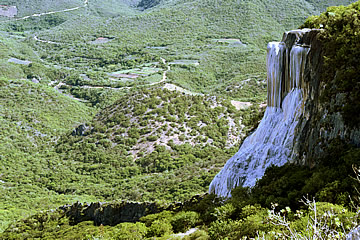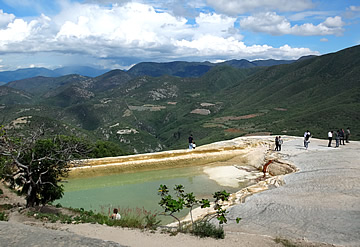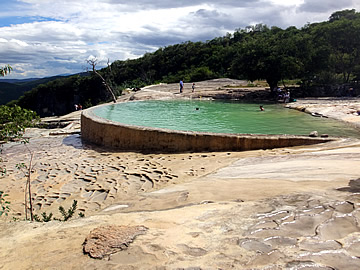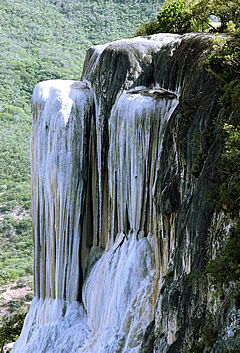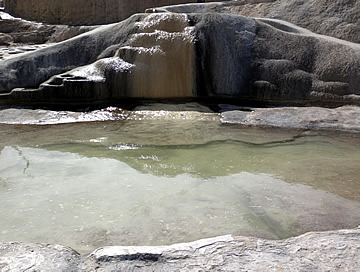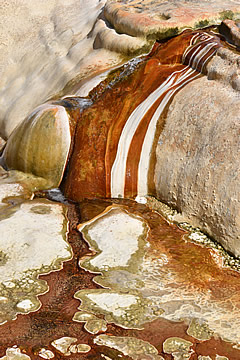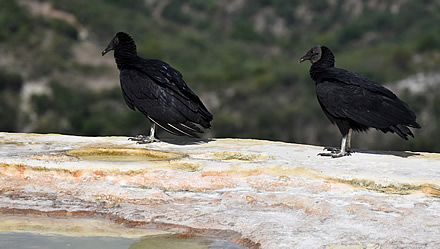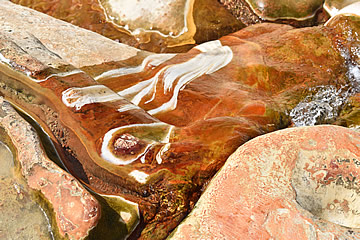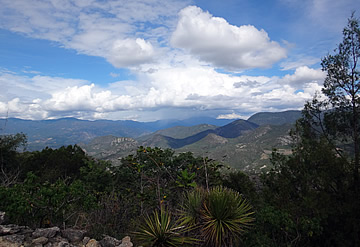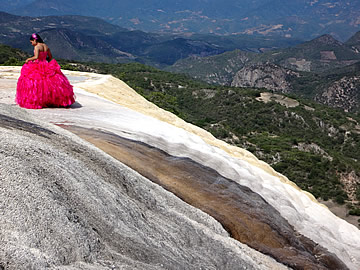

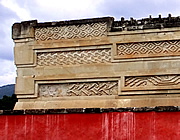
A fascinating demo of traditional textile dyeing and some beautiful stone fretwork and two atmospheric tombs at Mitla. Plus an enormous ancient tree and a "frozen waterfall"!


This enormous tree at the village of Santa Maria del Tule is a Mexican cypress said to be over 2000 years old - ring dating from a core sample dated it to 1 BC. It has a diameter of over 14m! Nearby are 1000 year-old and 100 year-old specimens.
The Spaniards tried to destroy it as the villagers regard it as sacred but they didn't succeed so built a church nearby instead.

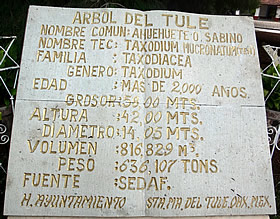

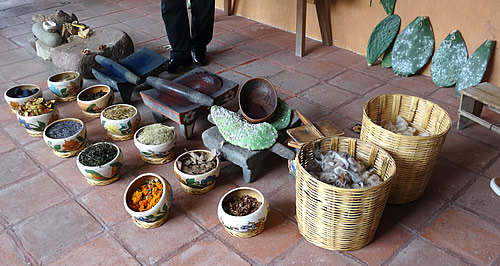
We had a really superb demonstration in a traditional weaving establishment of how the natural dyes are made. We have many times seen weaving in action but never before seen how the dyes are actually made. The chap gave a very good demonstration of carving and spinning of the wool, preparation of dyes and the dying process.
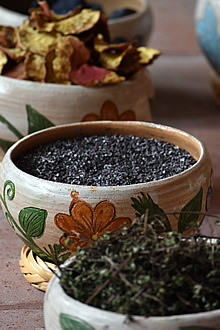
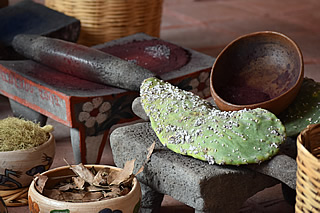
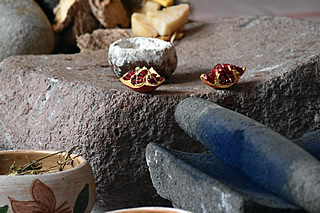
Marigold flowes give a yellow - using yarns of different colours produces different shades of yellow. Browns from pecan shells
Carmine red colour comes from cochineal insects on the nopal cactus. The red can be modified to a scarlet by adding acid (lime - the fruit) or to purple by adding alkali (lime - the mineral!).
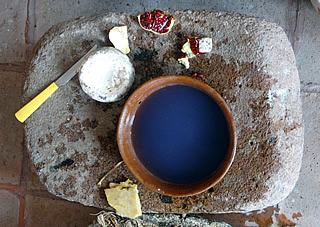
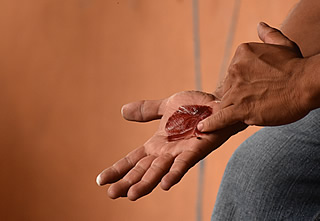
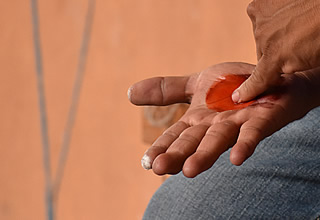
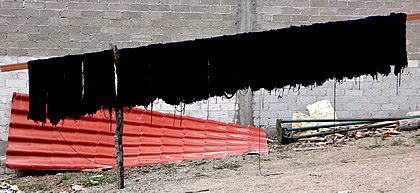
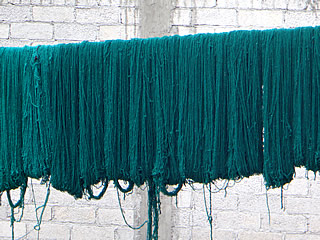
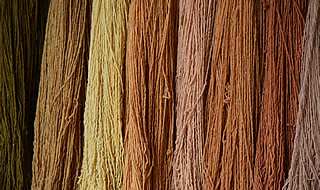
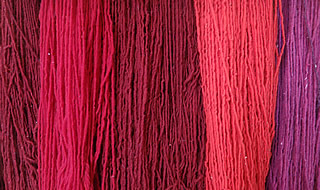
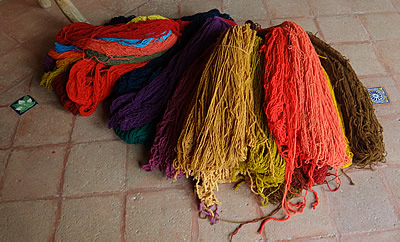
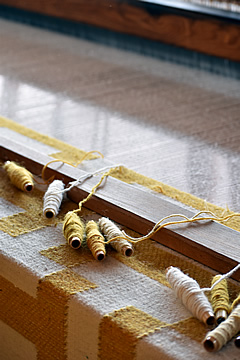
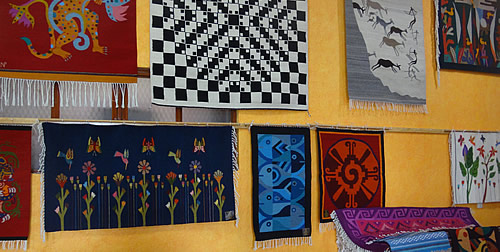
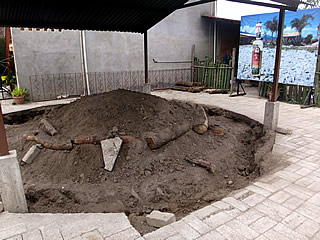
We also visited a mezcal producer. I don't like the stuff, far too smoky for me. There were very generous tastings of various mezcals and much more precious "wild" mezcals.
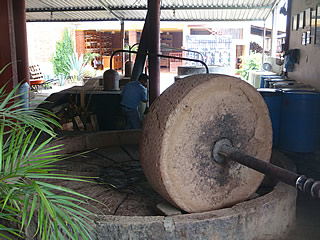
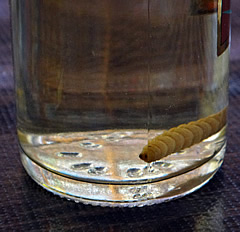
Mezcal is made from the agave plant - not just the blue agave from which tequila is made. The agave plant is stripped of its leaves and roasted, traditionally in pits covered with the leaves and soil. Finally it is fermented in vats of hot water and distilled.
Contrary to popular belief, tequila does not traditionally have a worm in the bottle, only some mezcals do, though this is a modern invention, probably a marketing ploy.
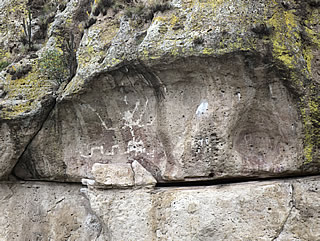
On the way to Mitla we passed the area of the prehistoric caves of Yagul and Mitla where evidence of plant domestication going back 10,000 years and habitation by hunter-gatherers has been found.1 Some rock art was visible from the road.
About 40km south east of Oaxaca, Mitla was a centre of Zapotec then Mixtec civilisation from the early post Classic, around 900AD. Its name comes from the Nahuatl "Mictlan" meaning "Land of the Dead", though the Zapotecs knew it as "Lyobaá" - "Place of Rest".2
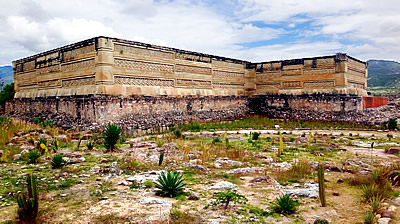
Like many of these ancient cities, people probably lived on the site for centuries before the Zapotec came to prominence, and Mitla was still inhabited at the time of the conquest.

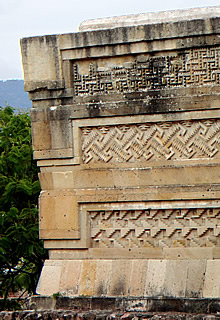
The Group of the Columns is the most impressive of the remains of pre-colonial Mitla. Here stone-built halls raised on platforms surround two spacious courtyards, north and south. The stand-out features of the architecture are the beautiful stone fretwork friezes on the walls. Colour was used extensively - particularly red.
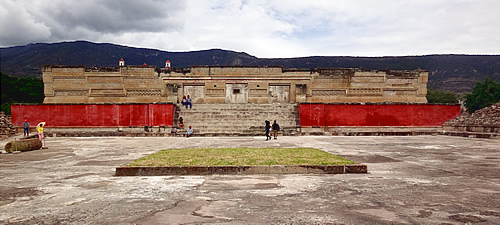
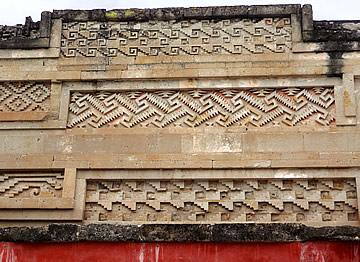
The Palace of the Columns on the north side of the north courtyard is in a good state. Buildings on the other side were dismantled by the Spanish to provide building stone for their own projects. Fortunately the Palace of the Columns remains virtually intact.
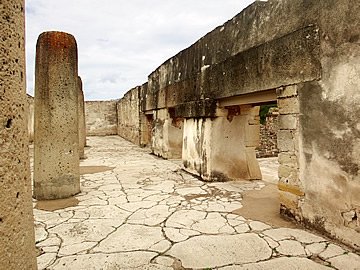
The monumental steps lead from the courtyard to three entrances to the palace and within is the Hall of the Columns. The stone for the six columns and the massive door lintels was quarried from the surrounding hills.
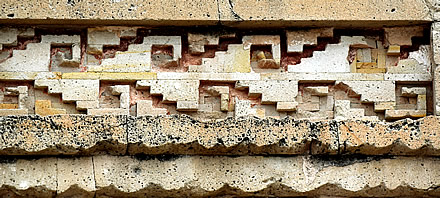
Inside the palace the walls are smothered with the geometric carving and there are substantial remnants of the red and yellow decorative pigments.
The Zapotec, as many ancient civilisations, believed that death was the gateway to a new life. Our guide told us that the step decoration on the stonework symbolized birth and progress through life before death.
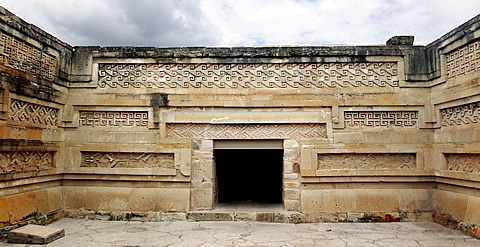
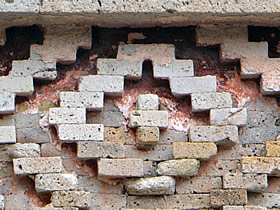
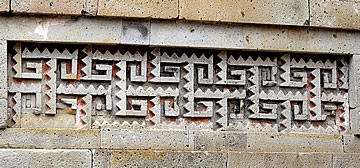
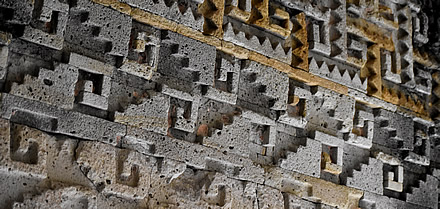
When you look carefully at the stonework you see that some are carved blocks while others are individual bricks shaped to fit into the patterns.
A Spanish priest, Father Burgoa, gave a highly detailed account of Mitla before the arrival of the Spanish. This account dates from the seventeenth century and claims that Mitla was once the residence of the powerful High Priest of the Zapotecs.2
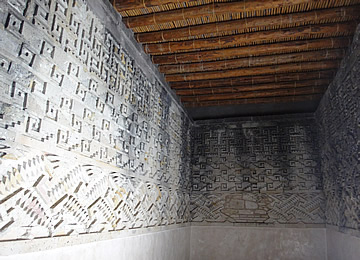
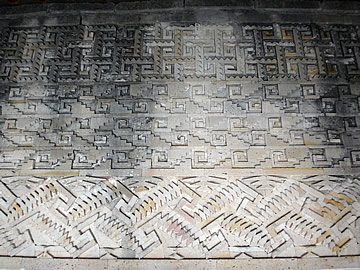 .
. 
According to Burgoa, the High Priest ruled from an inner chamber of the palace, seated on a throne covered in jaguar skin. Burgoa describes the bloody sacrifices he believes were common at Mitla, and a great underground burial chamber for the Zapotec kings, nobles and warriors. This burial chamber has not been discovered in modern times, though Burgoa describes how Spanish priests entered it and were so horrified they had it sealed.
The south courtyard has more fabulous fretwork and two underground tombs that we were able to visit through very low doorways.
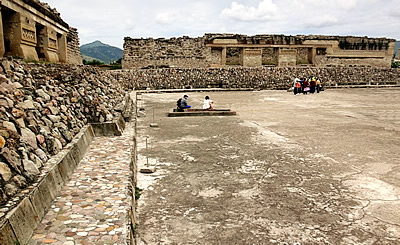
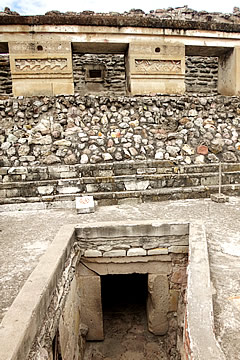
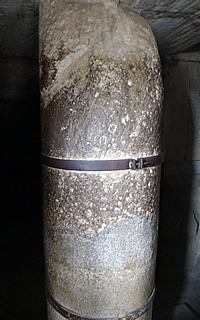
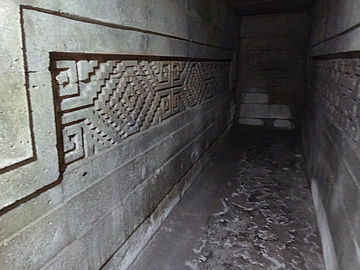
The tombs are in the shape of a cross and the walls were as lavishly decorated with stone fretwork as the walls of the major buildings outside. Funeral traditions of the time allowed for more than one burial in the same tomb, so earlier burials were simply moved to one side to make room for the new occupant.
Though the fretwork decoration in Tomb 1 is no longer intact, in Tomb 2 it is still in extremely good condition.
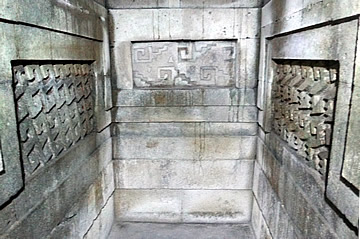
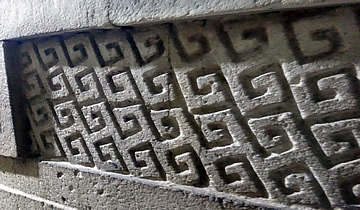
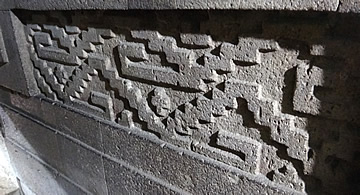
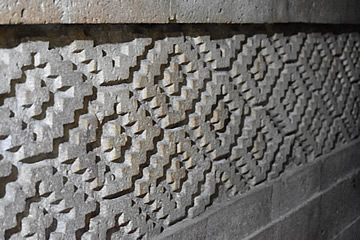
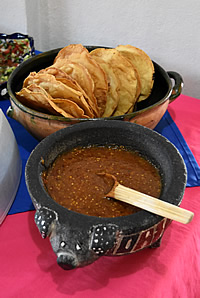
Lunch wasn't bad, a buffet but everything was bubbling hot. Freshly grilled meats and lots of spicy sauces as well as fried potatoes - most unusual. Finishing with churros.
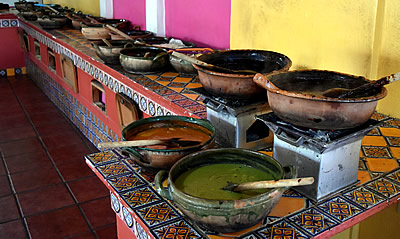
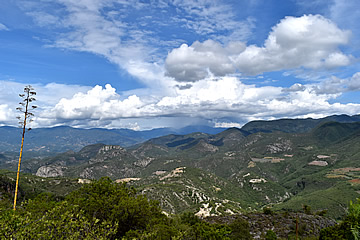
These natural rock formations east of Oaxaca are reached by a narrow unpaved road. One of the formations looks like a spectacular waterfall. It is, in fact, a cascade of white calcium carbonate deposited by the fresh water springs which tumble over the cliff. This "waterfall" can be seen from a shelf of white stone with pools, formed in a similar way.
